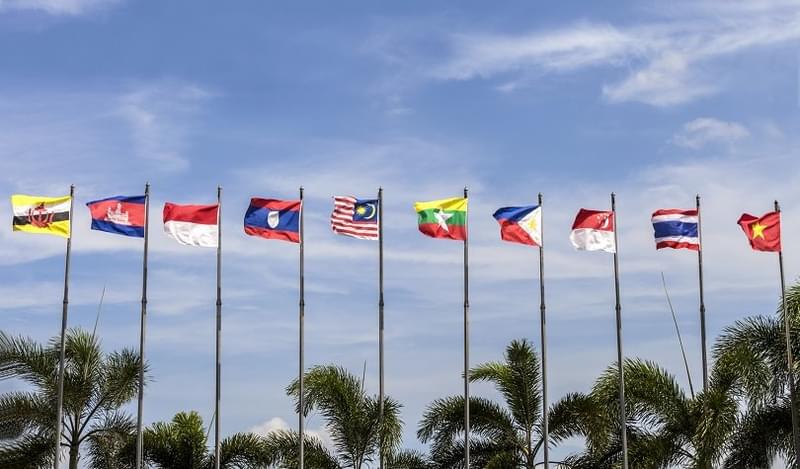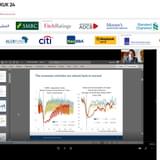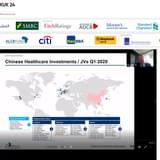Recent World Bank and IMF reports on the global economic outlook have pinpointed East Asian and especially the ASEAN states as the new hub of growth. While average global economic expansion is projected to slow down to 3.1% this year, picking up slightly to 3.4% in 2017, East Asian EM economies (excluding China), are expected to remain stable at 4.8% this year, rising to 5% in 2017 and 5.1% in 2018.
As China’s transitioning economy continues to lose momentum, with high but slowing growth (6.7% this year down to 6.3% by 2018), the ASEAN group and neighbouring states are catching up to it and are attracting the attention of international investors.
“Vietnam is the fastest growing economy at the moment, benefiting from rising costs in China, which has led to some low-level manufacturing moving across the border,” noted a senior economist speaking to Bonds & Loans.
“The Philippines is growing strongly, but there concerns that it may not last, given the politics of president Duterte. Indonesia and Malaysia have been hit quite hard by collapsing commodity prices, but are still growing at a reasonable rate, albeit slower than in the last few years.”
Performance across the region is not uniform however. The economist added that Thailand was not performing particularly well, with political uncertainty dragging on for 10 years, which is continuing to deter investors. “We expect to see growth there remaining quite weak.”
Thailand aside, there are two major factors that have contributed to higher growth across this region. The fact that countries in this region are still quite poor means they are displaying a lot of catch-up growth, and relatively strong demographics – a young, productive population – gives them an advantage over a lot of developed states.
Low risk and attractive yields
The region’s continuing and sustained prosperity is finally beginning to catch the eyes of investors. Issuance by Asia-Pacific borrowers surged 66% last quarter from the previous year to US$152bn on the back of lower financing costs – the average yield premium on securities dropped 72bp this year to 206bp.
In August, Malaysia enjoyed MYR6bn (US$1.5bn) worth of bond inflows, while Indonesia continued to attract international capital in spite of market volatility - foreigners increased Indonesian bond holdings by IDR7.1tn (US$540.1 million) in the first half of September after adding IDR9.1tn in August.
Finally, Vietnam – buoyed by strong exports and consistent GDP growth over the past three years – has seen its bond risk fall the fastest in the region. Foreign direct investment climbed to US$14.5bn in 2015, as major manufacturers like South Korea’s Samsung Electronics Co. and LG Electronics Inc. shift electronics production hubs to the country because of favourable labour costs.
As a result, Vietnam’s five-year credit default swaps fell 40bp in the three months to the end of September. The yield on the government’s 10-year bonds dropped to its lowest level since March, and was recorded at 6.46% on Monday.
So far, the combination of falling, but still relatively high yields and seemingly overstated risk has been effective for these states, particularly with continued low-to-negative benchmark rates in developed economies. However, observers warn of potential threats linked to China’s slowdown and Asia’s growing debt problem.
Banking sector woes
On Wednesday, Fitch released its assessment on the ASEAN banking sector. The analysis suggests that while regional banks have shown resilience last year, with NPL ratios low by historical standards, factors such as falling world trade, currency depreciation and a fall in commodity prices have contributed to a deterioration in the operating environment in the banking sector.
This means that the sector has become increasingly exposed to immediate shocks caused by a US Fed rate hike or a hard landing in China’s economy.
“Most of the concern focusses on China, with surging debt and increasing NPLs,” the economist said. “But it is actually not just China suffering from this – we are beginning to see debt build up across South East Asia, triggered by record low interest rates that serve to stimulate demand.”
The economist noted that South Korea, Malaysia and Thailand are particularly fragile in this context – even without a major crisis unfolding, debt will be a drag on growth for the next few years, as consumers look to deleverage. Some - like the Philippines and Indonesia, who managed to avoid a debt pile-up – will fare better than others, namely Thailand, Malaysia and Singapore.
This puts the central banks and policy makers in a tricky position. Either they have to hike interest rates and tighten monetary policies to avoid accumulating more debt, thus bringing up repayment costs. Or ease up to allow consumers to pay off their debt. Smart policy making will be critical for these economies.
For now, though, the situation is expected to remain stable. “The major banks in all of these economies look resilient and remain on a stable rating outlook, owing to satisfactory profitability and strong loss-absorption capacity,” Fitch’s report said.
Asia has been outpacing global growth for some time now, and the consensus is that, bar a major crisis in China, average growth is expected to stay above the 5% threshold, and the region has strong potential for growth over the next 20-30 years.









